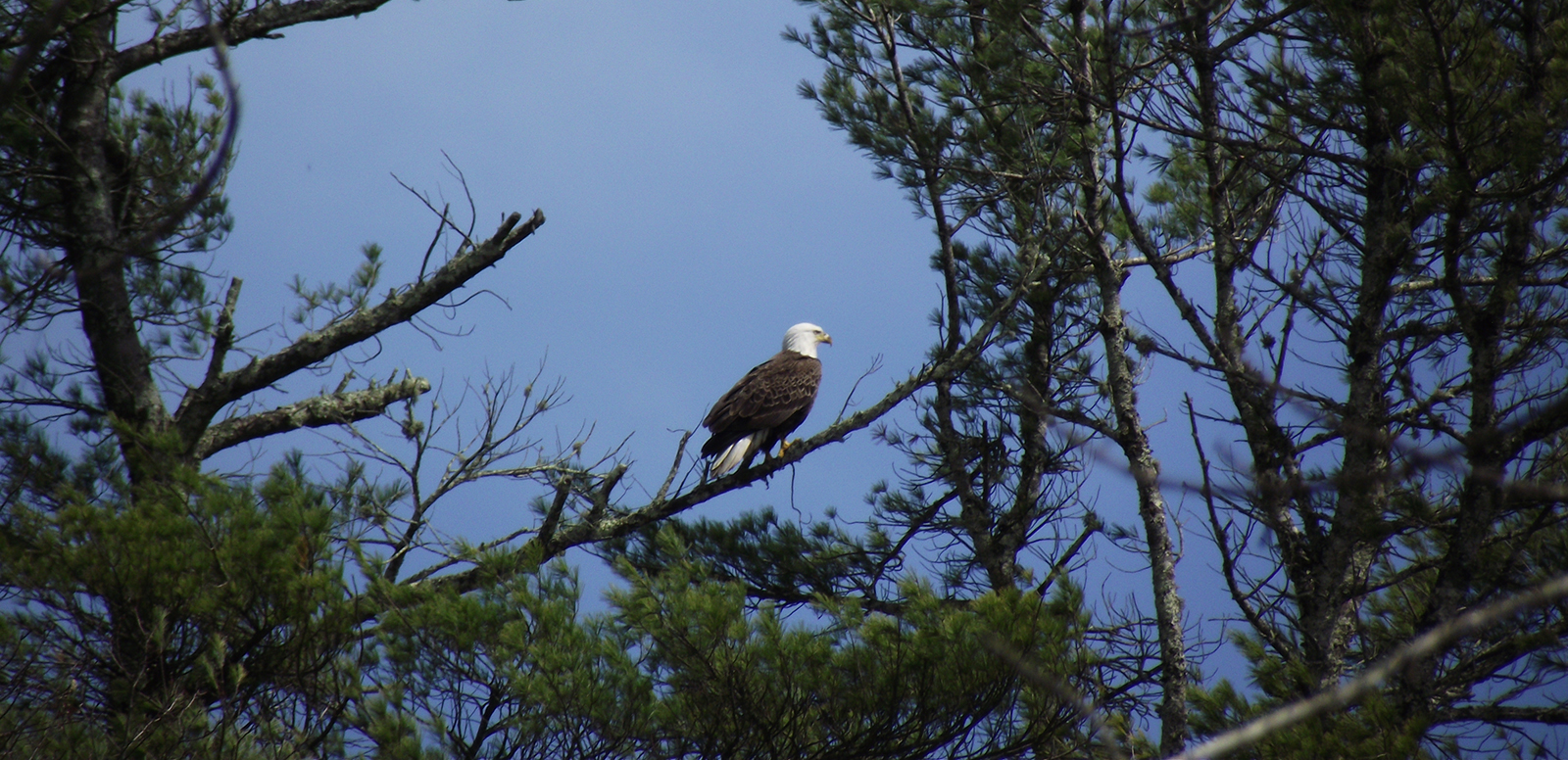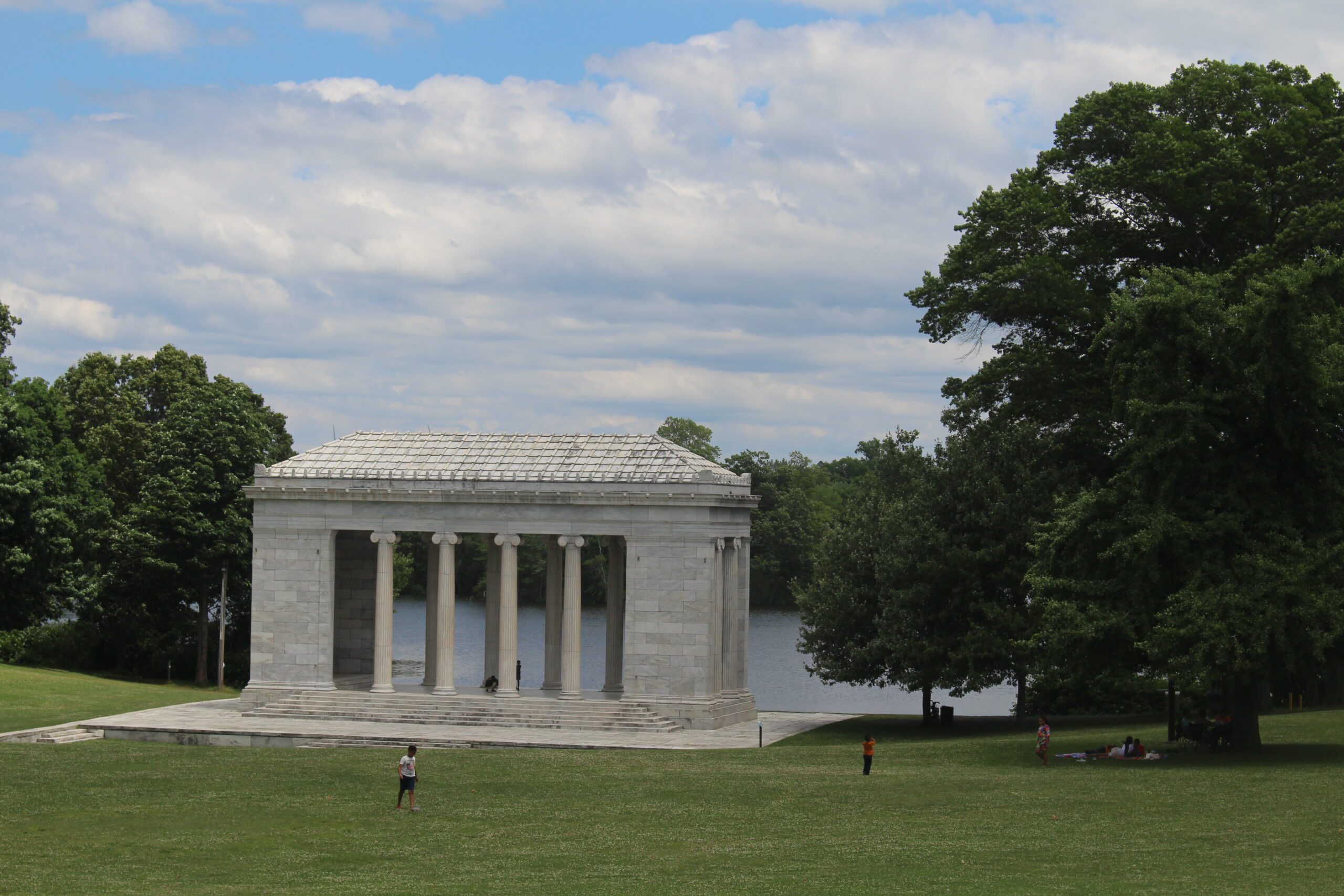Rewilding Roger Williams Park: ‘You Just Might See an Eagle … or Five’
June 28, 2024
PROVIDENCE — The rehabbing eagles at Roger Williams Park Zoo live in an enclosure without a net. The injured birds can’t fly, and thus can’t escape, but that didn’t stop a thief from sneaking in.
The Providence Parks Department recently got word from zookeepers that something was getting into the eagles’ enclosure and stealing their food.
“We got a call … ‘our eagle’ had flown in and taken their lunch,” department deputy superintendent Brian Byrnes said, chuckling.
“I told him I’d go talk to him,” Byrnes recalled joking with the folks at the zoo.
“Yeah, he’s kind of an independent agent,” park superintendent Wendy Nilsson said, referring to the wild bald eagle that has been spotted in Roger Williams Park.
Wild eagles now call the park, in the middle of Rhode Island’s urban core, their home.
“The existence of an eagles’ nest in Roger Williams Park really reflects the biodiversity and the healthy habitat that’s been created here over the years,” Nilsson said. “It’s a return to nature. It means that things are a little more in balance.”
The emergence of eagles in the park is a part of a larger success story for the national bird, which was once on the brink of extinction.
Eagles were sporadically spotted in Rhode Island in the 19th century, according to Charles Clarkson, Audubon Society of Rhode Island’s director of avian research, but their population took a hit nationwide because of the insecticide dichlorodiphenyltrichloroethane, better known as DDT. After the United States banned the poison in 1972, eagles saw a resurgence throughout the country and New England, but scientists didn’t record a nest in Rhode Island until 2003.
“The bald eagle population in Rhode Island has increased dramatically and will likely continue to increase over the coming decades,” Clarkson noted. Eagles are spotted throughout the state in non-breeding season, and Clarkson estimated the Ocean State has six to seven nests — a number that’s growing.
Nilsson said they haven’t publicized the wild eagles and don’t want to reveal the specific locations where they frequent or nest to protect the birds, which are no longer on the federal endangered species list but are still protected under federal law.
If people know exactly where nests are, there’s more chance they could disturb the birds, accidentally or on purpose, in their pursuit of getting closer to nature.

“For the most part, folks have been really fabulous about it,” she said.
“We would just say, you know, if you want to come to Roger Williams Park, you just might see an eagle or five,” she added. “That, I think, is kind of the fun of it.”
In addition to the eagles, the park has also become home to herons, egrets, and other wild birds. Visitors can get a peek at these birds during the walks the park hosts in the summer.
Nilsson said the emergence of the eagle and wild bird population at the park has followed the decline of geese, an increase in healthy fish, and the general rewilding of Roger Williams Park.
Getting rid of the geese, largely by encouraging visitors not to feed them, both leaves more resources for the other birds and keeps the water clean for the fish, which she speculated could be why the decrease in geese tracks with the eagles’ emergence.
(She also noted that getting the geese out of the park is positive for the geese themselves: “They need to migrate,” Nilsson said.)
Having the eagles in the park has personally brought Nilsson a lot of joy.
“I can just look out the window and just see these massive birds defending and having a healthy lunch,” she said.
“It’s always fun when someone’s jumped up from the table [at a meeting in the park] and said, ‘Oh my god, that’s a bald eagle,’” Byrnes added. Usually he replies, “Yeah, I mean I see them three or four times a day.”



